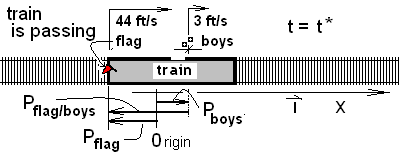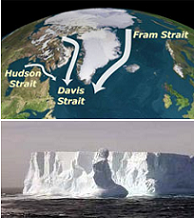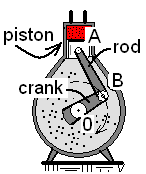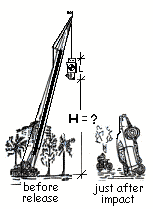
| 1.00 Matter Exists in Space and Time | Excerpt | 1 |
|
Physics is learned from educators, books which describe physical reality and simple experiments. A scientific language is developed. Matter, space and time are beginning ideas. | ||
| 1.01 A Basic Methodology | 2 | |
| ♦ Prove: (A - B)² = A² - 2AB + B² | Excerpt | 3 |
|
Physics uses algebra and algebra uses geometry. As a "refresher" exercise |
||
| ♦ Theorem of Pythagoras | 4 | |
| ♦ Eratosthanes' Experiment | 5 | |
| ♦ Drilling Rig Visibility | 6 | |
| ♦ Prove: ( -1 ) x ( -1 ) = 1 | 7 | |
| 1.02 Position: the First Vector | 8 | |
| ♦ Pharaoh's Engineers | Excerpt | 9 |
|
||
| ♦ Vectors Contain Trigonometry | 10 | |
| ♦ Crank, Rod and Piston | Excerpt | 11 |
|
| ||
| ♦ Ladder-Boom Rescue | 12 | |
| ♦ Dog and Pony Show | 13 | |
| 1.03 Basic Terms and Tools | 14 | |
| 1.04 Models of Reality | 15 | |
| 1.05 Velocity: Our First Derivative | 16 | |
| 1.06 Mass Equation: BODY | 17 | |
| 1.07 Momentum: BODY | 18 | |
| 1.08 Derivative of Momentum: BODY | 19 | |
| 1.09 About: f = ma | 20 | |
| 1.10 Uniform Motion | 21 | |
| 1.11 Constant Momentum Motion | 22 | |
| ♦ Valentino's Wake | 23 | |
| ♦ Dog Greets Owners | Excerpt | 24 |
|
||
| ♦ Least Distance 1 | 25 | |
| ♦ Least Distance 2 | 26 | |
| ♦ Yacht and Sea Buoy | 27 | |
| ♦ Scissor Jack | 28 | |
| ♦ Train Passes Two Boys | Excerpt | 29 |

Two boys, walking beside railroad tracks heard a train approaching from behind. The older boy knew the city train speeds limit was 30 mph. He and his buddy walked about 3 feet per second. When the nose of the engine was abreast of them, the smaller boy began to count. The count, the instant the caboose passed, was, "... 34 seconds." A moment later, the older boy said, "... only about 1400 feet long." |
||
| ♦ Civil War Memorial | 30 | |
| 1.12 Steps to Integrate | 31 | |
| 1.13 Measurement of μMEarth | 32 | |
| 1.14 Weight and Weighing | 33 | |
| ♦ Hand Supports a Mass | 34 | |
| ♦ Lunar "Carry-Off" Luggage | 35 | |
| ♦ Ten Pounds of Potatoes | 36 | |
| 1.15 Vectors: BODY | 37 | |
| 1.16 Notations: Position and Velocity | 38 | |
| 1.17 Value, Slope and Curvature | 39 | |
| 1.18 Differentiation: Time-Dependent Integral | 40 | |
| ♦ Blue Ocean Towing | Excerpt | 41 |
 In the Davis Strait, a massive ice slab has cleaved from the ice-shelf and is drifting
toward an oil rig. Our largest tug, (pulling constantly at 90° to the current),
will drag the slab off-course so it passes abreast of the oil rig, at a distance no
closer than 4000 meters. Calculate the towing force required of the tug to
accomplish the task.
In the Davis Strait, a massive ice slab has cleaved from the ice-shelf and is drifting
toward an oil rig. Our largest tug, (pulling constantly at 90° to the current),
will drag the slab off-course so it passes abreast of the oil rig, at a distance no
closer than 4000 meters. Calculate the towing force required of the tug to
accomplish the task.
| ||
| 1.19 Gravity at Altitudes | 42 | |
| ♦ Projectile Arcs | 43 | |
| 1.20 Events in Time | 44 | |
| ♦ Galileo's Inclined Plane | 45 | |
| ♦ Acceleration Initial Condition | 46 | |
| 1.21 Omitted Forces | 47 | |
| ♦ Parachutists Drag Force | 48 | |
| ♦ God Lifted Earth I | 49 | |
| ♦ God Lifted Earth II | 50 | |
| ♦ Point Blank | 51 | |
| ♦ Shot Tower | 52 | |
| 1.22 Momentum Equation: BODY | 53 | |
| 1.23 Mom Eqn Component Form: BODY | 54 | |
| ♦ Geostationary Orbits | 55 | |
| 1.24 Vector Basis: Circular Motion | 56 | |
| ♦ Polar versus Equatorial Weight | 57 | |
| ♦ Lift-Off Acceleration | 58 | |
| 1.25 Method, System and Numbers | 59 | |
| 1.26 Newton's Analytic Method | 60 | |
| ♦ Sled Mass | 61 | |
| ♦ Kinematics of Bar AB | 62 | |
| ♦ Quick Return Mechanism | 63 | |
| 3.00 Engineering Thermodynamics | 110 | |
| 3.01 Work: BODY | 111 | |
| 3.02 Mechanical Energy Equation | 112 | |
| ♦ Bilge Pump Work | 113 | |
| ♦ Buoy Lift I | 114 | |
| ♦ Buoy Lift II | 115 | |
| ♦ Champagne Cork Velocity | 116 | |
| ♦ Slap Shot | 117 | |
| ♦ Kids Clean the Garage | 118 | |
| ♦ Tank with a Movable Wall | 119 | |
| ♦ Harpy's Nest | 120 | |
| 3.03 Work Considerations | 121 | |
| ♦ Back Squat | 122 | |
| ♦ Rock Climb | 123 | |
| ♦ Work to Draw the Castle Bridge | 124 | |
| ♦ Elephant Weighs Teak | 125 | |
| ♦ Polaris Scale Model | 126 | |
| ♦ Choice of Worker: "A" or "B" ? | 127 | |
| ♦ Pushing a Crate Uphill | 128 | |
| ♦ Boy in a Wheelchair | 129 | |
| ♦ Egg-Drop Challenge | 130 | |
| ♦ Planet Gizmo | 131 | |
| 3.04 Work as "on" or "by" | 132 | |
| ♦ Optimized Work | 133 | |
| ♦ Drunk Driving Awareness | Excerpt | 134 |
|
| ||
| ♦ Wreck at Batavia | 135 | |
| ♦ Rock Falls onto a Spring | 136 | |
| 3.05 System: Selection and Isolation | 137 | |
| 3.06 Forklift Events | 138 | |
| 3.07 Energy Equation: BODY | 139 | |
| 3.08 Internal Energy | 140 | |
| 3.09 Compression Work | 141 | |
| 3.10 Energy: SUBSTANCE | 142 | |
| ♦ Batch Mix Event | 143 | |
| 3.11 Constant Pressure Events: IG | 144 | |
| 3.12 Frictionless Adiabatic Process: IG | 145 | |
| 3.13 About Enthalpy | 146 | |
| 3.14 Constant Volume IG | 147 | |
| 3.15 About Entropy | 148 | |
| ♦ Blowgun Hunter | 149 | |
| ♦ Skateboard Skill | 150 | |
| ♦ Newman's Annihilator | 151 | |
| ♦ Kids on a Swing | 152 | |
| ♦ SCUBA Horsepower | 153 | |
| ♦ What is cos(θ + 60°)? | 154 | |
| 3.16 About Heat | 155 | |
| ♦ Hot, Heat, Cold... etc | 156 | |
| 3.17 Heat and Work Sign Conventions | 157 | |
| 3.18 Energy Equation I: SUBSTANCE | 158 | |
| 3.19 Energy Equation II: SUBSTANCE | 159 | |
| 3.20 Polytropic Processes: IG | 160 | |
| 3.21 Events of Ideal Gases | 161 | |
| 3.22 Rotational Kinetic Energy | 162 | |
| ♦ Air Pistol | 163 | |
| ♦ Air/Water Mortar | 164 | |
| ♦ Linear Elastic Work | 165 | |
| ♦ Tank, Spring and Heater | 166 | |
| ♦ Candle Beneath a Piston | 167 | |
| ♦ Average Force to Brake | 168 | |
| 3.23 Mean Value Theorem | 169 | |
| ♦ Vacuum Launched Rocket | 170 | |
| ♦ Hot Shot | 171 | |
| 3.24 Simple Springs | 172 | |
| ♦ Bungee Jumper | Excerpt | 173 |
|
||
| ♦ Box moves between Two Springs | 174 | |
| ♦ Washer Switch | 175 | |
| 3.25 Complex Substances | 176 | |
| 3.26 Energy Rates and Power | 177 | |
| ♦ Elevator Speed | 178 | |
| ♦ Gravity Work-Rate | 179 | |
| 3.27 Shaft Work | 180 | |
| ♦ Ship's Reduction Gear | 181 | |
| ♦ Horsepower of an Ox | 182 | |
| ♦ Truck Least Horsepower | 183 | |
| ♦ Tank Locomotion UNDER REVISION | 184 | |
| ♦ Cyclist Power UNDER REVISION | 185 | |
| ♦ Car Drives Uphill | 186 | |
| ♦ 18-Wheeler Safe Braking Speed | 187 | |
| ♦ Atwood's Machine | 188 | |
| ♦ Deadweight Compactors | 189 | |
| ♦ Pulling Sheet Piles | 190 | |
| 4.00 Thermodynamic Properties | 191 |
| 4.01 Phases at 1 Atmosphere | 192 |
| 4.02 Normal Properties of Water | 193 |
| 4.03 Energy Equation: Constant Pressure | 194 |
| ♦ Chef Thickens the Soup | 195 |
| ♦ When will the Teapot Whistle? | 196 |
| ♦ Water at One Atmosphere | 197 |
| ♦ Citrus Concentrate | 198 |
| ♦ Microwave Coffee | 199 |
| ♦ Grease Fire Experiment | 200 |
| 4.04 Steam Tables | 201 |
| ♦ Yardley's Extractor | 202 |
| ♦ Stone Boiling | 203 |
| ♦ Atmospheric Engine | 204 |
| ♦ Pressure Cooker | 205 |
| ♦ Emergency Power MS | 206 |
| ♦ Neon Signage | 207 |
| ♦ Leaded Pipe Joint | 208 |
| ♦ Specific Heat Calculation | 209 |
| ♦ Space Shuttle Re-entry | 210 |
| ♦ Copper Block Slides on Ice | 211 |
| ♦ Sausage Preparation | 212 |
| ♦ Ice versus Dry Ice Comparison | 213 |
| ♦ 1861 - Rifle Musket | 214 |
| ♦ Laser Retina Surgery | 215 |
| 5.00 Thermodynamic Analysis | 216 |
| 5.01 Mass Equation | 217 |
| ♦ Trans Alaska Pipeline | 218 |
| 5.02 System Perspectives | 219 |
| ♦ Dig Suez | 220 |
| ♦ Linear Valve | 221 |
| 5.03 Leibnitz's Calculus | 222 |
| 5.04 Linear Mass Equation | 223 |
| ♦ Pipe Pig | 224 |
| ♦ Boost Pump | 225 |
| ♦ Freeze-Dried Rattlesnakes | 226 |
| ♦ Civil Rights Memorial | 227 |
| ♦ Flow Through an Expansion | 228 |
| ♦ Depth of Wine | 229 |
| ♦ Extruded Rod | 230 |
| 5.05 Momentum Equation | 231 |
| ♦ Reaction of a Jet | 232 |
| ♦ Jet-Ski - Static Pull | 233 |
| ♦ Time to Refill the Pool | 234 |
| ♦ Pitot-Static Gage | 235 |
| ♦ Where Water Jets Collide | 236 |
| ♦ P-51 Mustang | 237 |
| 5.06 Energy Equation | 238 |
| ♦ Water Seeks its Level | 239 |
| ♦ Gear Pump | 240 |
| ♦ Aquarium Turbines | 241 |
| ♦ Not a "COOL IDEA" | 242 |
| ♦ Shipping Maeku | 243 |
| ♦ Instant Hot Water | 244 |
| ♦ Pipe Line Flow | 245 |
| ♦ Torricelli's Theorem | 246 |
| ♦ Scraped-Surface Heat Exchanger | 247 |
| ♦ Cardiac Horsepower | 248 |
| ♦ Heat Powered Elevator | 249 |
| ♦ Niagara Falls Power | 250 |
| ♦ Tomato Juice | 251 |
| ♦ ZULIA - Side Casting Dredge | 252 |
| ♦ Water Pumped Vertically | 253 |
| ♦ Light Bulb Efficiency | 254 |
| ♦ Ideal Gas Elevator | 255 |
 The Great Pyramid of Egypt was constructed to precise proportions. A hypothesis is that the pyramid was constructed to fit inside an imaginary hemisphere with each of its corners and its peak touching the hemisphere. Suppose the hypothesis were true. Calculate the resulting angle each face would make with the horizontal plane of the desert.
The Great Pyramid of Egypt was constructed to precise proportions. A hypothesis is that the pyramid was constructed to fit inside an imaginary hemisphere with each of its corners and its peak touching the hemisphere. Suppose the hypothesis were true. Calculate the resulting angle each face would make with the horizontal plane of the desert. The connected mechanical parts whereby explosive combustion becomes power of a rotating shaft
are called "power trains." The simplest arrangement, crank-rod-piston, shown. Engine designers
must know precisely the position and speed of the piston face for every position of the crank.
The math tool, vectors, makes such tasks logically systematic.
The connected mechanical parts whereby explosive combustion becomes power of a rotating shaft
are called "power trains." The simplest arrangement, crank-rod-piston, shown. Engine designers
must know precisely the position and speed of the piston face for every position of the crank.
The math tool, vectors, makes such tasks logically systematic. When detail is unavailable, approximation is required.
When detail is unavailable, approximation is required.
 Design and setup of bungee jumping ropes is a "life or death" matter. Done wrong, we read about it in the newspapers. The rail of the New River Gorge Bridge passes 785 feet above the surface of the slow, trickling stream, the New River. Our jumper, a 120 pound "living-dangerous" lady, wants ropes set so at the bottom of her jump she can grab a fist of water from the river.
Design and setup of bungee jumping ropes is a "life or death" matter. Done wrong, we read about it in the newspapers. The rail of the New River Gorge Bridge passes 785 feet above the surface of the slow, trickling stream, the New River. Our jumper, a 120 pound "living-dangerous" lady, wants ropes set so at the bottom of her jump she can grab a fist of water from the river.